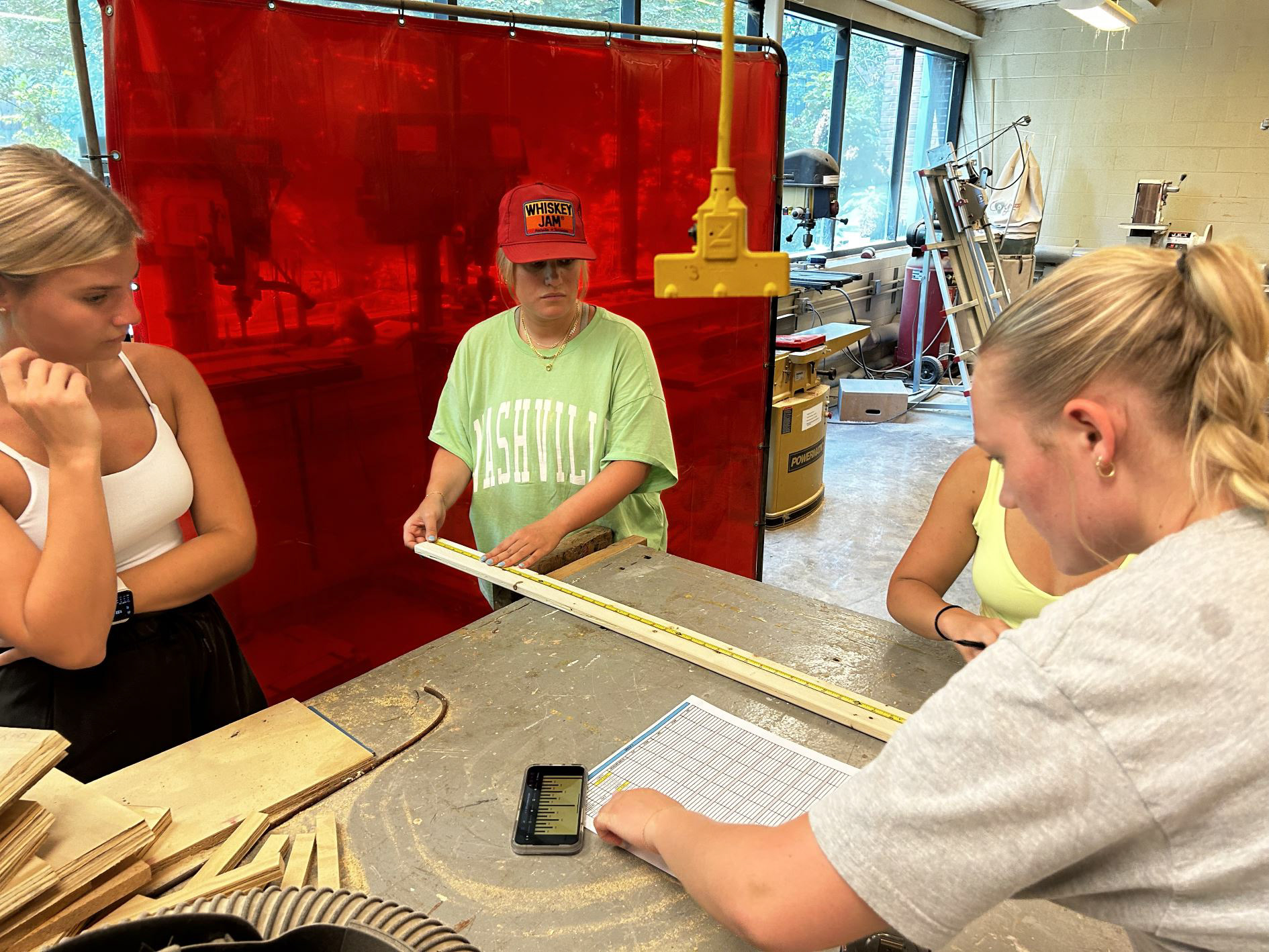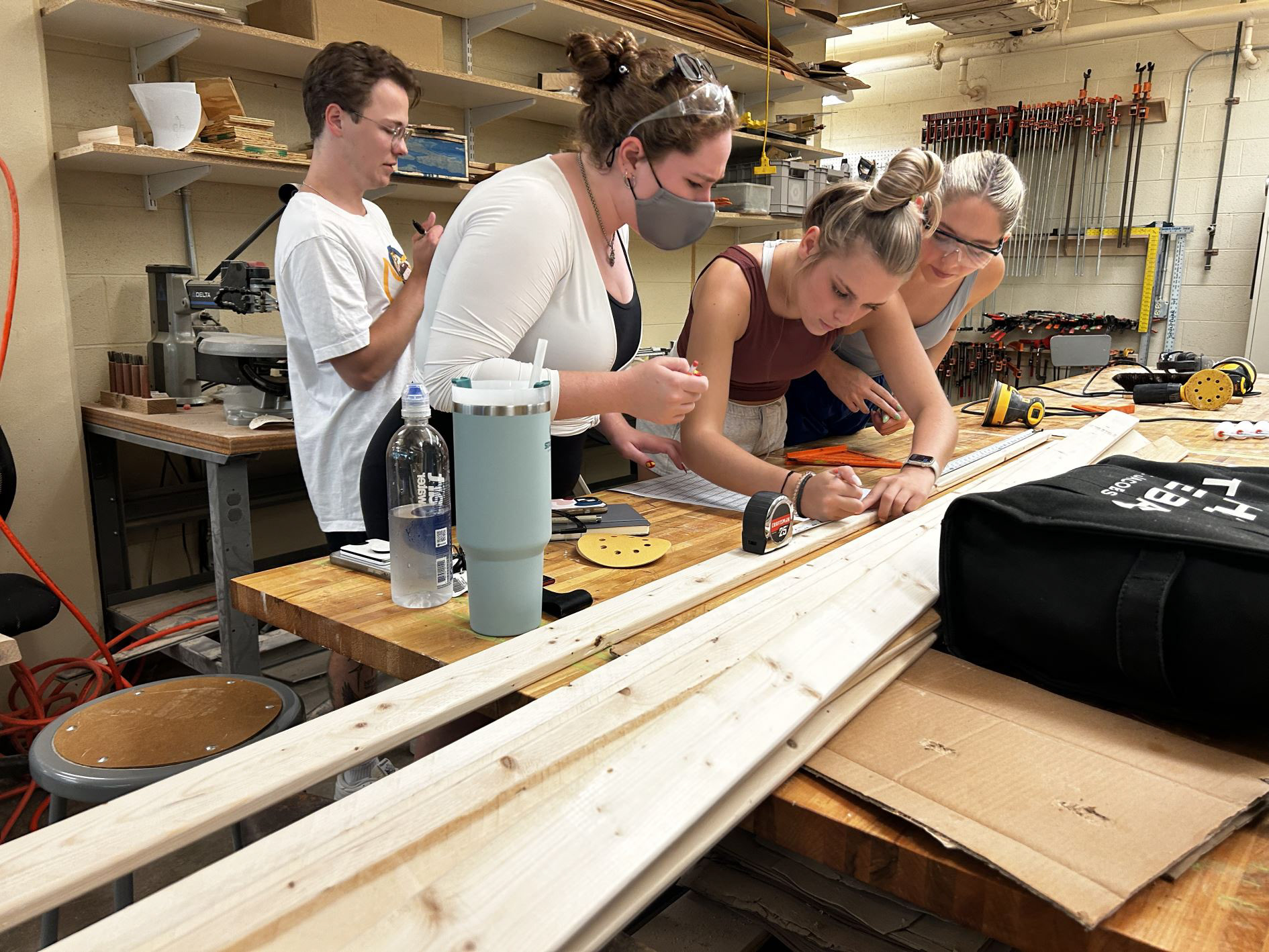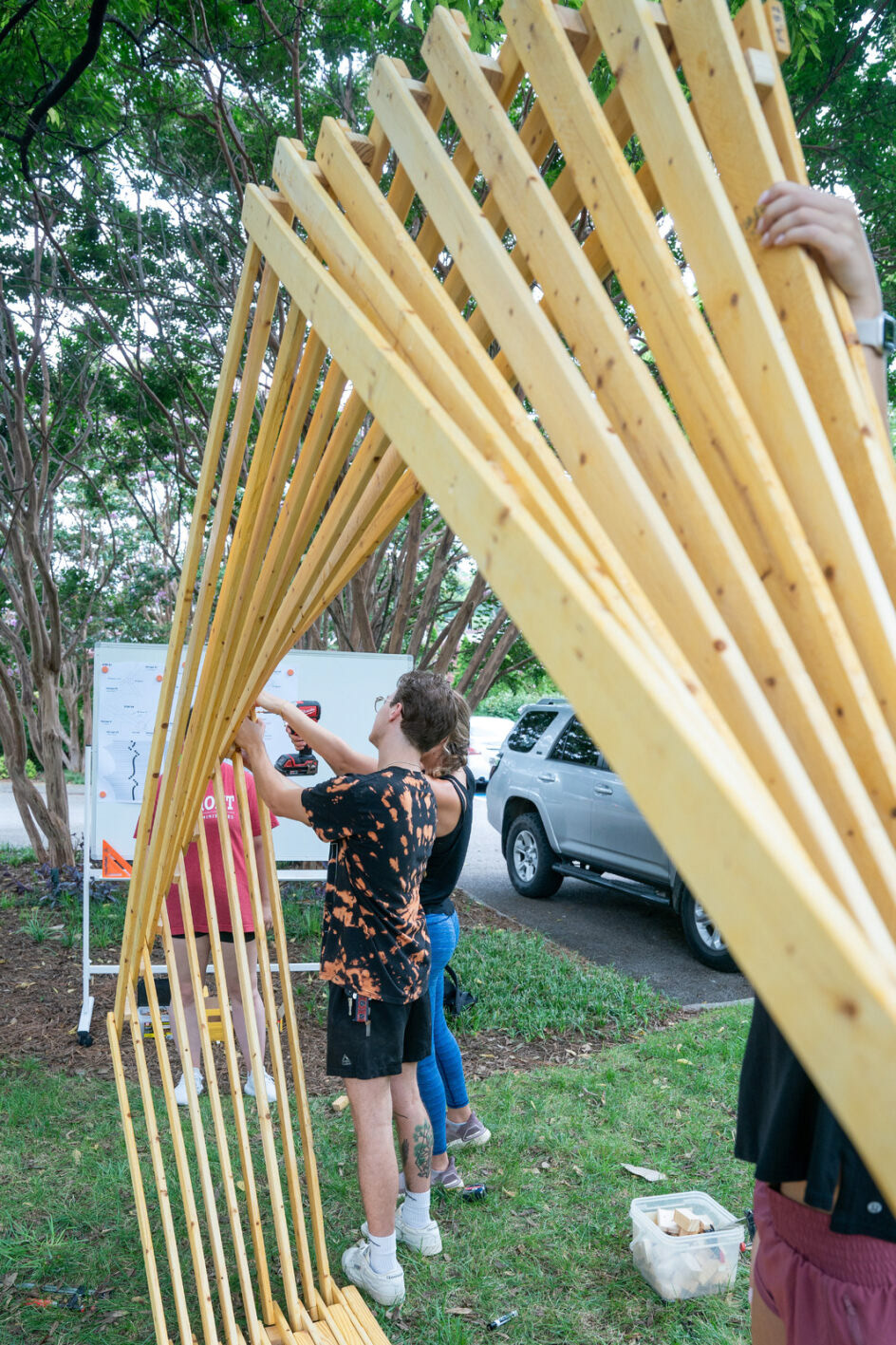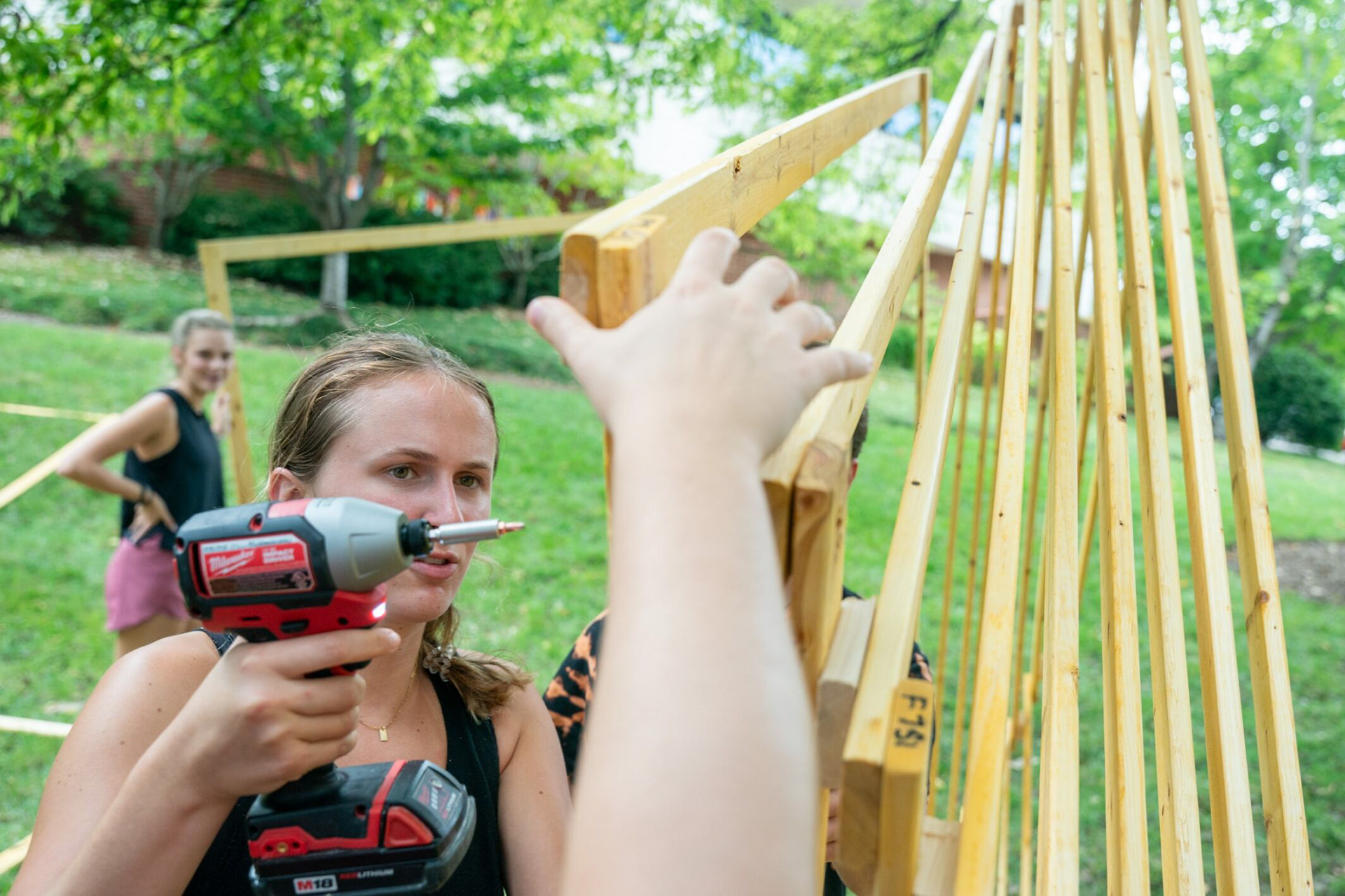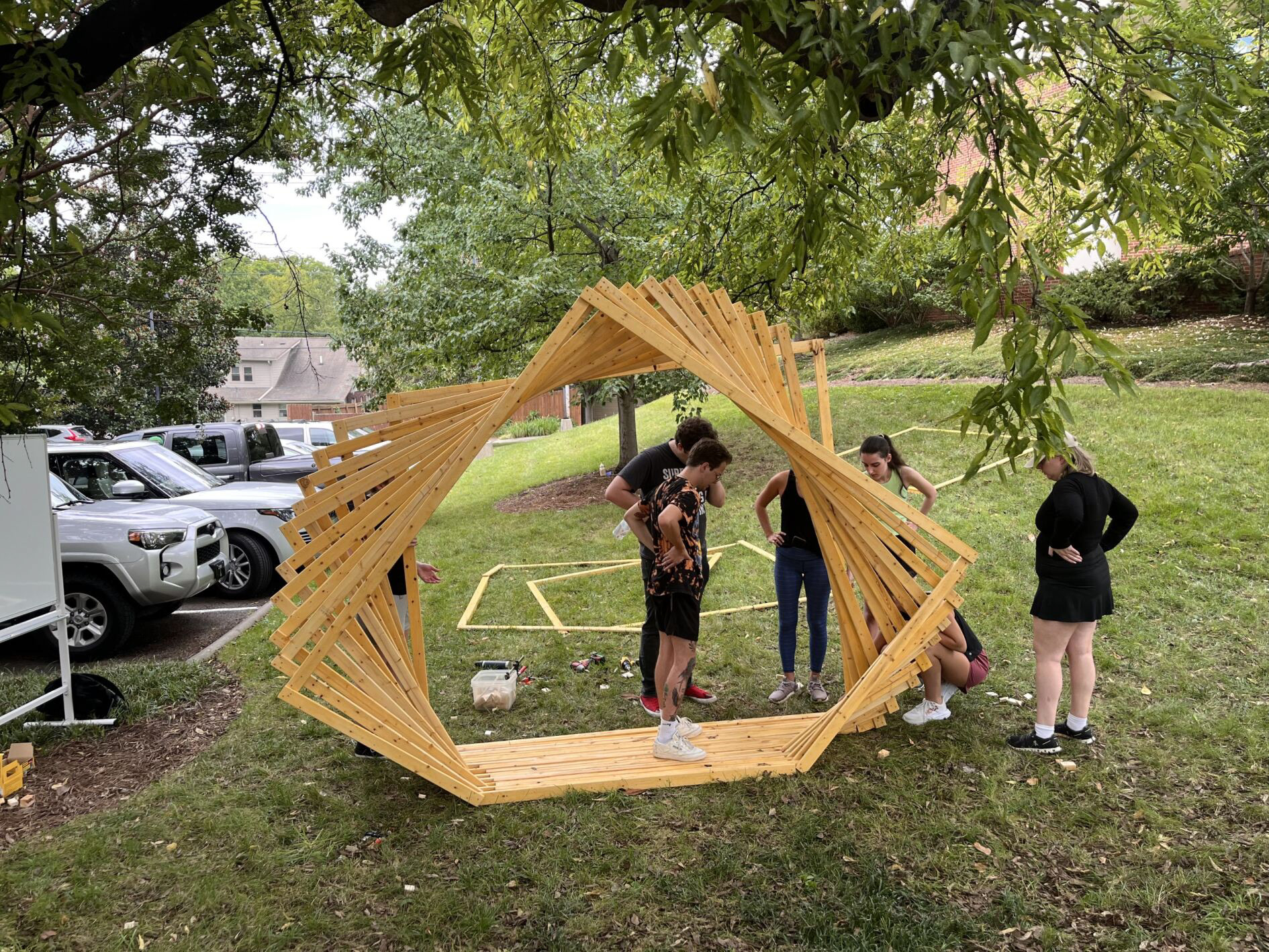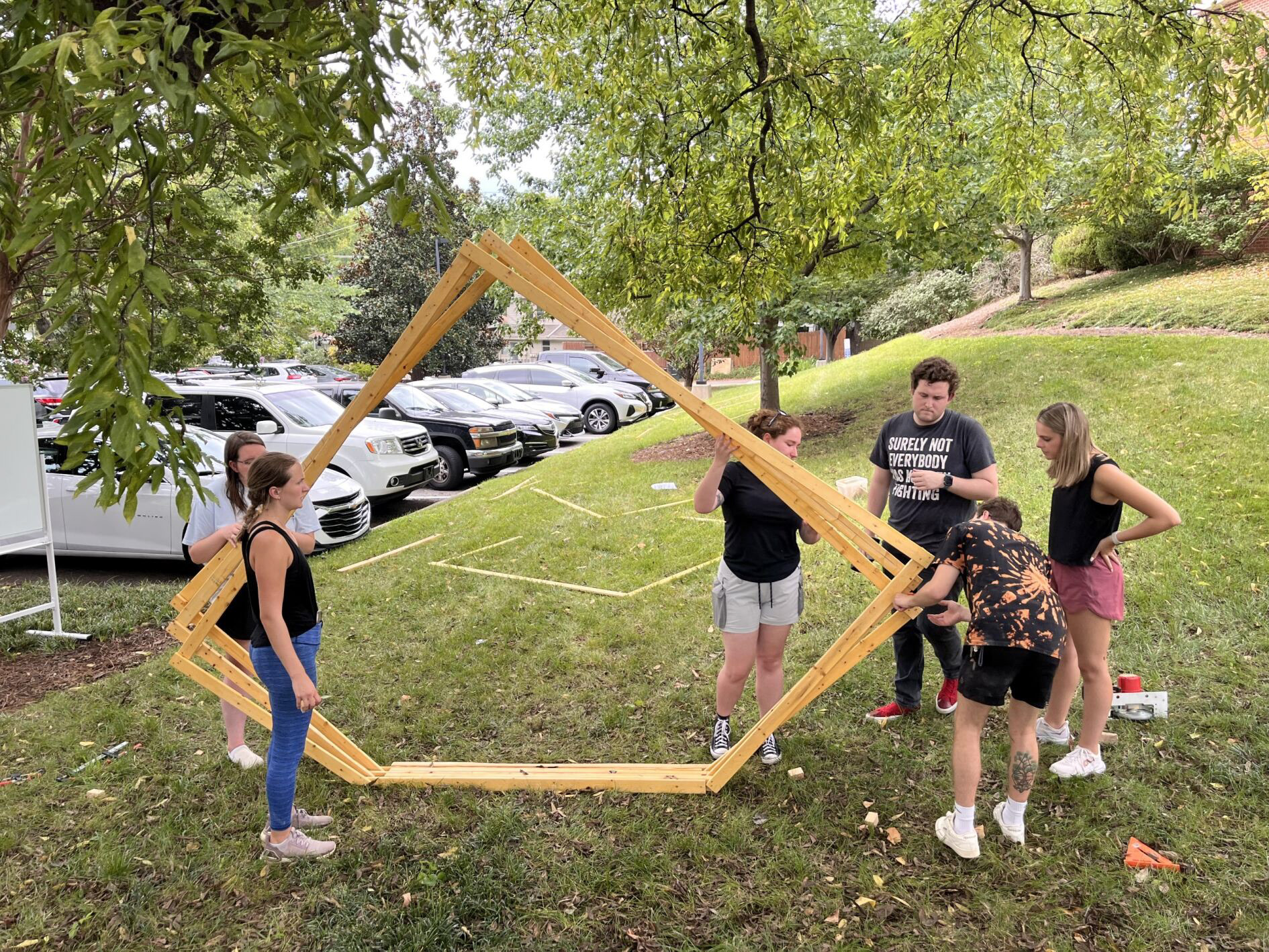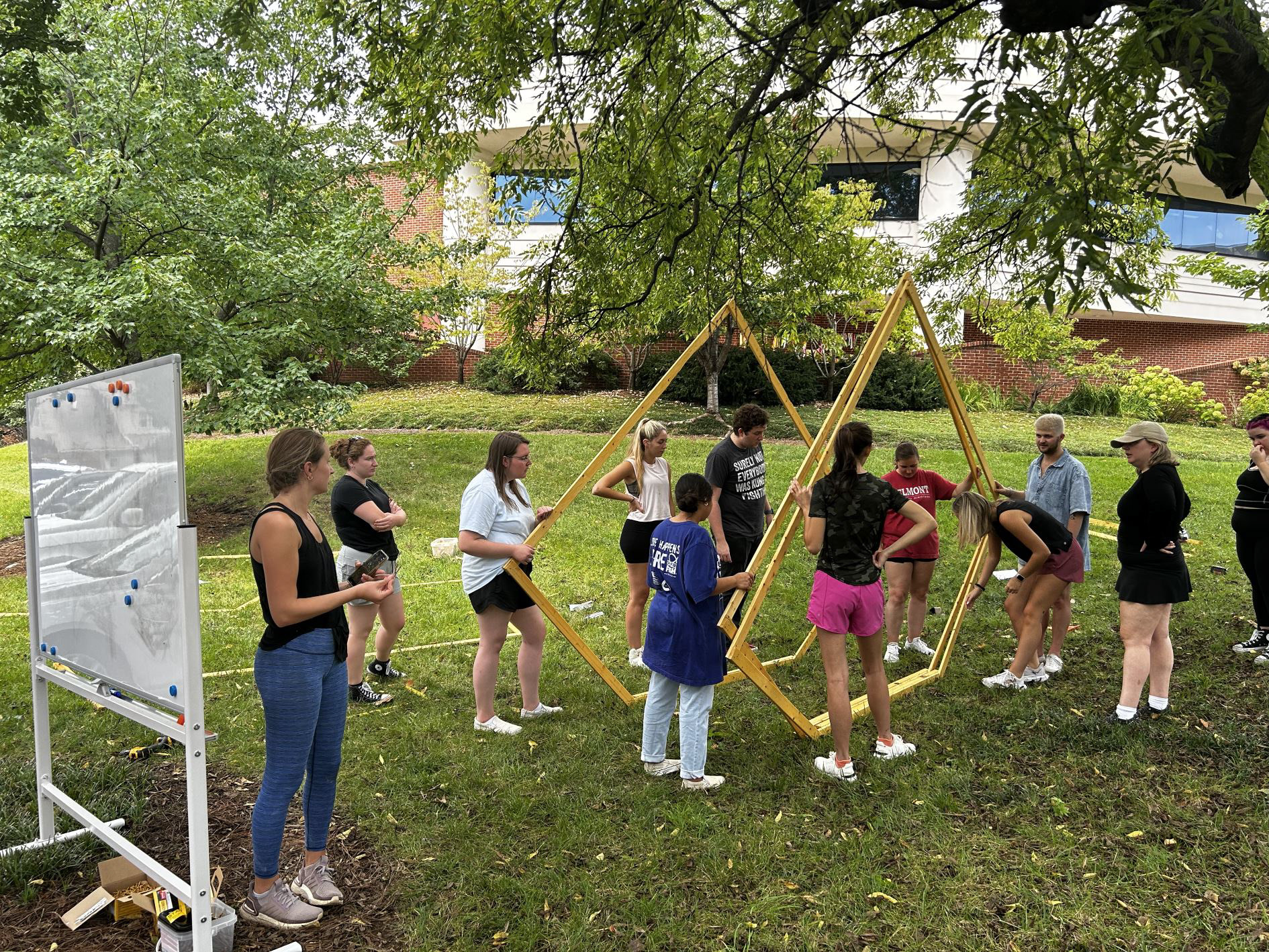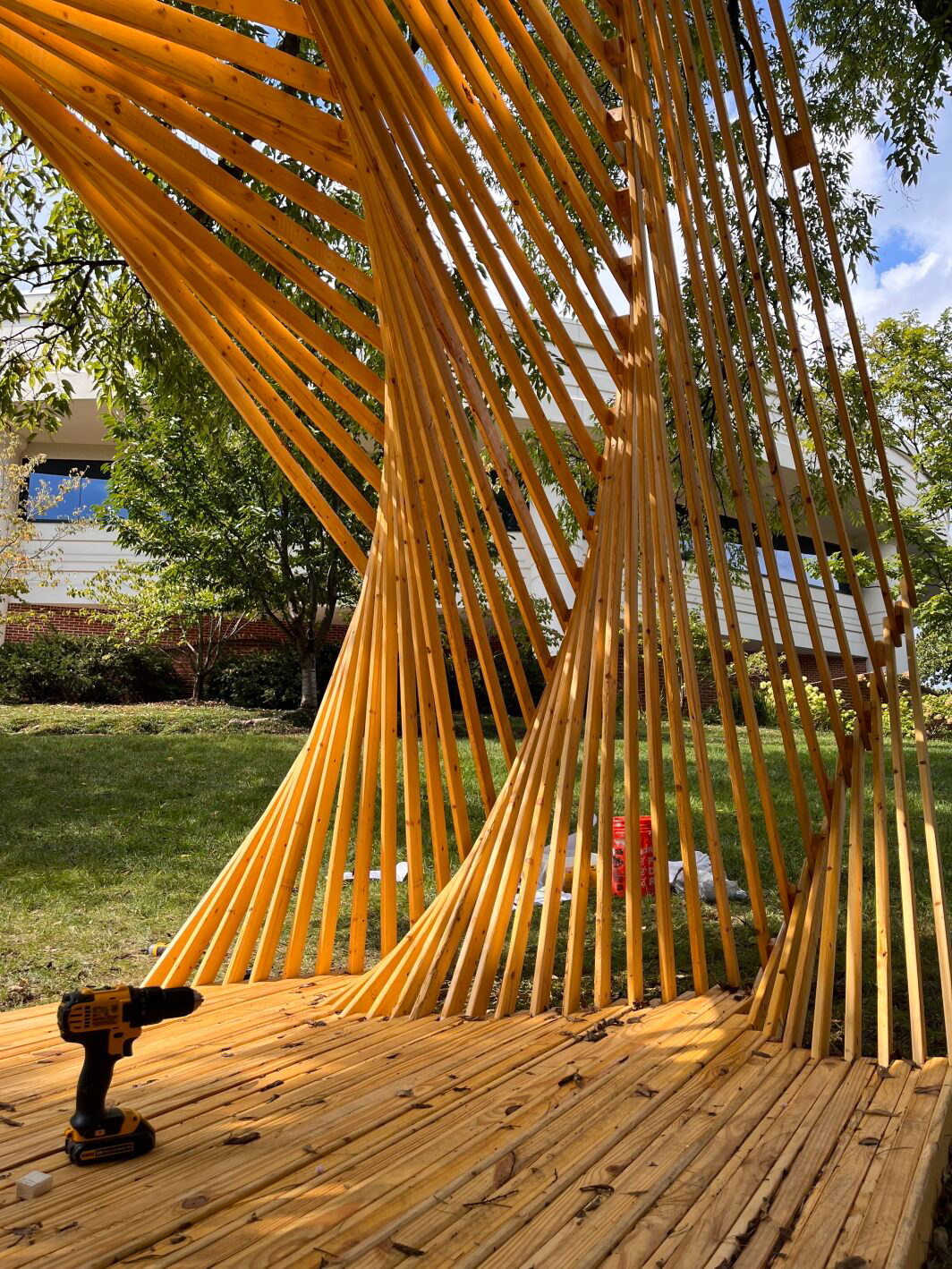PROJECT DESCRIPTION:
Using computational design tools, designers can visualize and model in a digital environment, allowing them to experiment with different design variations, gaining insights into how their design decisions influence spatial configuration and overall aesthetics. Students are tasked with physically assembling a pavilion following a computational design process, involving much teamwork and effective communication in coordinating tasks, sharing ideas, and troubleshooting issues.
The design of the Haven was parametrically developed so that students were able to extract from a digital model the necessary data to measure, cut, and assemble 37 frames of varying shapes while comprising 211 slats and more than 600 screws of three different types. This design's core concept relies on exploring parametric design to inform the fabrication of complex shapes while facilitating collaborative workflows since the students were divided into groups responsible for fabricating different frames. They had to coordinate the assembly of each part of the Haven and depend on each other's work to accomplish the Haven's construction.
TEAM:
TEAM:
Work done in collaboration with architecture Studio 5 students and interior design Studio 6 students.
Students: Anna Agnew, Carley Cabral, Emmie Dodd, Sarah Hays, Elise Heimke, Lily Isaacs, Peyton Kauffman, Addie McAbee, Kate Phillips, Keily Quinteros, Miles Robinson, Emily Schiedemeyer, Haylee Smith, Alyssa Tabor, Jesse Tarbok, Brendon Terry, Honor Thomas, Rebecca Tonguis, Vira Williams
Professors: Fernando Lima, Finis Elliot
